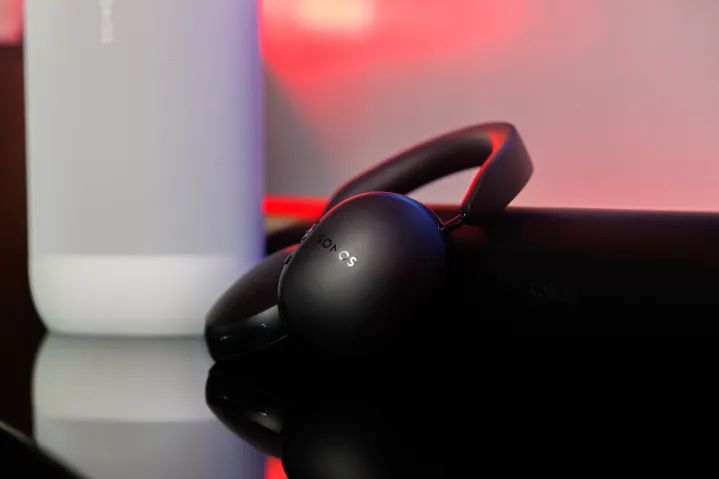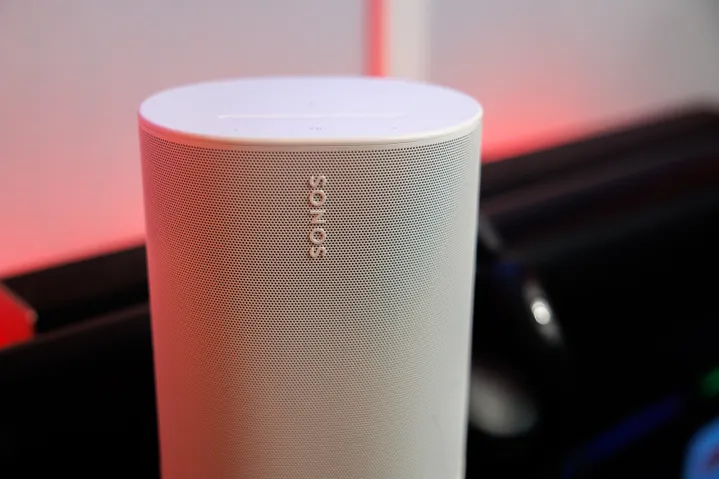There’s no worse feeling when it comes to tech than that sense of hopelessness that we’ve all felt at one time or another. When your phone won’t connect. When your screen shatters through no fault of your own. When your printer is … being a printer. When you still love that product but are stuck waiting for it to work.
Sonos owners have been in their own special circle of hell since mid-May, when a now-infamous update to the Sonos app and the platform as a whole went very, very wrong. Not helping matters is that the upgrade-that-wasn’t has hit folks in different ways. Some have reported few problems. Others have serious issues getting their Sonos system — which until now had been mostly rock solid in its ability to play music wirelessly throughout a house — to do anything at all.
There are a lot of moving parts to the Sonos ecosystem. And the simple fact is that those of us on the customer side of the equation have no idea what really happened, just how broken things are, and what Sonos needs to do to get back on the right track.
Here’s the real catch: If you’ve bought even a single Sonos product, you’re likely to have invested at least a couple hundred bucks in the ecosystem. If you have multiple rooms outfitted with Sonos speakers, multiply your sunk cost by that much more. If you’re also into Sonos’ excellent home-theater setups, you’re likely well into the thousands of dollars.
And these are speakers that are pretty much tied to Sonos. That’ll vary a bit depending on what you have. But for anything but the most recent generation of speakers, the option to use them as a set of dumb speakers via Bluetooth isn’t really an option. You wouldn’t be wrong in feeling like your Sonos system has held you hostage a little bit. Sure, you’re not actually tied down to anything and can walk out the door anytime, but you’ll be poorer for it. Or you can stick things out and hope for the best.
In Sonos' own words ...
What happened
On April 23, 2024, Sonos announced its “most extensive app redesign ever, creating an unprecedented streaming experience that allows listeners to organize their favorite playlists, stations, albums and more from over 100 services on one customizable Home screen.”

That was exciting stuff, given that the Sonos app — an integral part of the Sonos experience — has, shall we say, never been a shining example of user experience. Consolidating the five tabs of the old app experience and making them accessible on the home screen itself sounded like a good idea, in theory.
“As we are always pushing ourselves to innovate, and listening to feedback from our passionate customers, we felt now was the time to reimagine our app experience,” Sonos CEO Patrick Spence said in a press release announcing the update. “After thorough development and testing, we are confident this redesigned app is easier, faster and better. It once again raises the bar for the home music listening experience, and sets up our ability to expand into new categories and experiences.”
Sonos’ ‘thorough development and testing’ fell short.
Read that again: “After thorough development and testing, we are confident this redesigned app is easier, faster and better.”
One thing that had us a little bit nervous was that Sonos announced the major update for the S2 system two weeks before the app update was going to be available to the public. And it didn’t give journalists early access. Fine. We’re not special. But that’s also the sort of thing that makes you wonder just how close to the deadline Sonos was going to be cutting it. Chances are, work on the update continued up until the last minute. And so outside of some screenshots — which conveyed how the new app would look, but not how it would work — everyone was going to get their first impressions at the same time come May 7.
The two weeks rolled by, and everyone started updating. There were immediate issues. Some had to do with features — some basic, some niche — having been removed from the app. Use a sleep timer to automatically turn off the tunes after a set amount of time? Sorry. Not there. Need to manage a local library of music instead of only playing through the cloud? That was gone, too.
Those are just two examples from the list of things we knew about. Worse, still, was that for many of us the Sonos system was all but unusable. Switching speakers didn’t work more often than it did. Or it’d switch, and then switch back. Good luck making groups again.
“I really think it was that we just got taken by surprise,” Eddie Lazarus — Sonos’ chief strategy officer and chief legal officer — told me in an interview in late September 2024. If we had known that we were going to have these stability and performance issues, we never would have launched this app. But we didn’t, and now we’re just heads down to fix it.”
Not to be overly dramatic, but it was a tech nightmare. And it was far more than just an “extensive app redesign.”

The mea culpa
Sonos didn’t initially publicly acknowledge the issues that so many were obviously happening. But The Internet doesn’t work on the same timetable. The Sonos subreddit was quickly flooded with reports. Missing features. Broken experiences.
Basically the worst thing anyone at Sonos could have imagined — a broken platform, and very angry customers.
There were signs that Sonos knew what was up and was on the case. We started to see posts in the Sonos subreddit from “KeithFromSonos,” shedding some light on upcoming app updates, when bugs would be fixed, and features returned.
A public apology from Sonos — and its CEO — didn’t come for two months.
That was better than nothing, but it still wasn’t a public acknowledgement from Sonos. That finally came on July 25, two full months after the software update was announced, and nearly three months after it was released. It came in the form of a blog post from Spence.
“We know that too many of you have experienced significant problems with our new app which rolled out on May 7,” he wrote. “And I want to begin by personally apologizing for disappointing you. There isn’t an employee at Sonos who isn’t pained by having let you down, and I assure you that fixing the app for all of our customers and partners has been and continues to be our number-one priority.”
Other than the actual apology, the blog post didn’t break much new ground. It included a rough update schedule — something that’d been in the Sonos subreddit all the while.
What about the future?
It’s important to remember that there are a couple of things at work here. One is the Sonos app itself. Features were missing. The app’s UX — an industry acronym for user experience — was not great, and arguably a step backward from the old S2 app, which already wasn’t what would be considered a shining example of how to do things. But at least it worked.

Speaking of which, there’s been scuttlebutt that Sonos may resurrect the S2 app to tide folks over until everything is worked out. That came out of a report from The Verge. In all likelihood, that was just someone at Sonos spitballing, and not something I’d consider likely to happen. And that’s because the other — and bigger — thing going on is that this mess also involves an update to the Sonos platform itself. The app, for all its problems, is just a tool by which we control the platform.
Sonos users are being held hostage by a broken system they want to love again.
Updates are a scary proposition for companies even when everything goes well. They require a lot of work. (Work Sonos obviously didn’t do properly in this case.) They cost money, and updates don’t usually generate revenue on their own. To roll back the Sonos app would likely mean rolling back the platform update, too. And if that were to happen, there are no guarantees it wouldn’t break things even further. Or that the new Sonos Ace headphones wouldn’t work anymore. And on August 6, Sonos pushed an update that enabled the Ace headphones to work with the rest of Sonos’ soundbars. It’s hard to imagine Sonos removing that functionality.
And this app and platform update was putting the pieces in place for the next generation of Sonos products — two of which have now been delayed until the software is sorted. Sonos said they’re ready to go and were planned for release by October. Now? Who knows when we’ll see them.
No, the only way out is through. That’s going to require some more patience on the part of customers as Sonos updates — and fixes — the new platform and app.
Customers are going to grumble. A lot. And very loudly. They’re not wrong to do so. And what other choice do they have? Sonos setups aren’t cheap, even in their smallest iteration. And unless you don’t mind setting money on fire, you’re likely just going to ride this one out and hope things get better sooner rather than later. But until then, everyone’s being held hostage by a broken system they want to love again.
Spence, on the August 7 earnings call, spoke about winning back its customers and partners after this debacle. “We are enacting programs this quarter to both support and thank our customers and partners for sticking with us through this period, and turn their dissatisfaction to delight,” he said.
We don’t yet know what that means — or how Sonos could possibly “delight” its current customers anytime soon — but we do know that support-and-thank program will run through the end of the year, which gets Sonos into the first quarter of its fiscal year 2025.
We also don’t know if Spence will continue to lead the company, which he’s helmed since 2017. We’ve made the argument that Spence should no longer be CEO once all this is over.
No matter who is in charge on the other side of this debacle, one thing is clear: Sonos has some major damage control to do.




